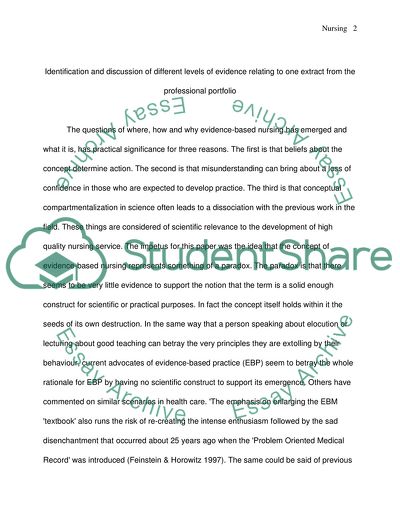Cite this document
(Evidence-Based Medicine Case Study Example | Topics and Well Written Essays - 3500 words, n.d.)
Evidence-Based Medicine Case Study Example | Topics and Well Written Essays - 3500 words. Retrieved from https://studentshare.org/medical-science/1706607-identification-and-discussion-of-different-levels-of-evidence-relating-to-one-extract-from-the-professional-portfolio
Evidence-Based Medicine Case Study Example | Topics and Well Written Essays - 3500 words. Retrieved from https://studentshare.org/medical-science/1706607-identification-and-discussion-of-different-levels-of-evidence-relating-to-one-extract-from-the-professional-portfolio
(Evidence-Based Medicine Case Study Example | Topics and Well Written Essays - 3500 Words)
Evidence-Based Medicine Case Study Example | Topics and Well Written Essays - 3500 Words. https://studentshare.org/medical-science/1706607-identification-and-discussion-of-different-levels-of-evidence-relating-to-one-extract-from-the-professional-portfolio.
Evidence-Based Medicine Case Study Example | Topics and Well Written Essays - 3500 Words. https://studentshare.org/medical-science/1706607-identification-and-discussion-of-different-levels-of-evidence-relating-to-one-extract-from-the-professional-portfolio.
“Evidence-Based Medicine Case Study Example | Topics and Well Written Essays - 3500 Words”. https://studentshare.org/medical-science/1706607-identification-and-discussion-of-different-levels-of-evidence-relating-to-one-extract-from-the-professional-portfolio.


